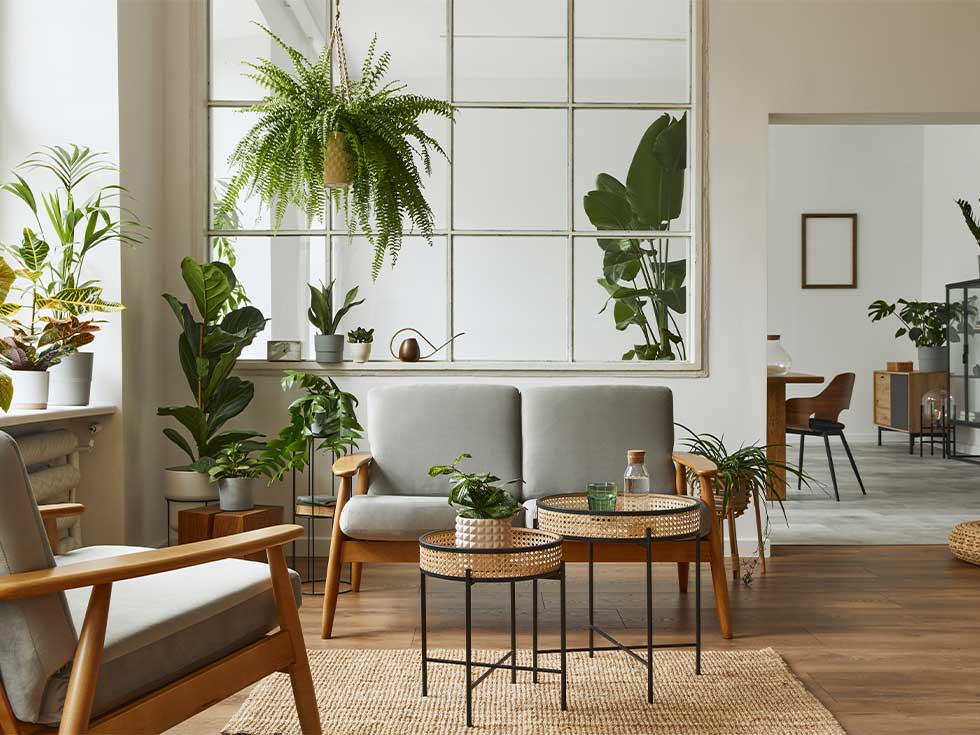Indoor plants have long been cherished for their aesthetic appeal, but their benefits extend far beyond mere decoration. Science has illuminated a myriad of positive effects that indoor plants can have on our well-being, both physically and mentally. From purifying the air we breathe to reducing stress levels, these green companions offer a host of advantages that can greatly enhance our indoor living spaces. In this article, we will delve into seven science-backed benefits of having indoor plants.
- Improved Air Quality
One of the most well-known benefits of indoor plants is their ability to improve indoor air quality. Through a process known as photosynthesis, plants absorb carbon dioxide and release oxygen, effectively enhancing oxygen levels in the environment. Moreover, certain plants, such as spider plants and peace lilies, have been found to filter out pollutants like formaldehyde, benzene, and ammonia, thereby promoting healthier indoor air.
- Stress Reduction
Scientific studies have shown that the presence of indoor plants can reduce stress and anxiety levels. The visual appeal of greenery and the act of caring for plants can trigger a sense of tranquility and calm. Additionally, the natural connection to nature that indoor plants provide has been linked to reduced physiological stress responses, helping to create more soothing and relaxing indoor environments.
- Enhanced Productivity and Concentration
Indoor plants can also boost productivity and concentration. Research suggests that having plants in workspaces or study areas can improve focus and cognitive function. The introduction of plants to such settings has been associated with increased attention spans, quicker task completion, and enhanced problem-solving abilities.
- Humidity Regulation
Indoor plants can play a role in maintaining optimal indoor humidity levels. Through a process called transpiration, plants release water vapor into the air, increasing humidity. This can be particularly beneficial in dry indoor environments, where adequate humidity levels are essential for respiratory health and preventing dry skin and irritated eyes.
- Noise Reduction
Certain types of indoor plants have been found to mitigate noise pollution. Plants with dense foliage and large leaves can absorb and deflect sound waves, leading to quieter and more peaceful indoor spaces. This quality is especially valuable in urban settings or areas with high ambient noise levels.
- Accelerated Healing
Believe it or not, indoor plants might even contribute to faster recovery times for individuals healing from illnesses or surgeries. Studies have shown that hospital patients with plants in their rooms tend to experience reduced pain, anxiety, and fatigue. The presence of plants can create a more positive healing environment, supporting the body’s natural healing processes.
- Enhanced Mood and Creativity
The sight of lush greenery indoors can uplift mood and stimulate creativity. Indoor plants are believed to trigger the release of endorphins, the “feel-good” hormones, leading to improved emotional well-being. Additionally, exposure to natural elements, even indoors, has been associated with heightened creativity and problem-solving skills.
Conclusion
The benefits of buying indoor plants extend far beyond their aesthetic appeal. Scientific research has unveiled a remarkable range of advantages that these green companions can offer to our physical, mental, and emotional well-being. From purifying the air we breathe to reducing stress levels and boosting productivity, indoor plants are a simple and effective way to create healthier and more pleasant living and working environments. So, whether you have a green thumb or are just starting out, incorporating indoor plants into your surroundings could be a scientifically supported step toward a better quality of life.

